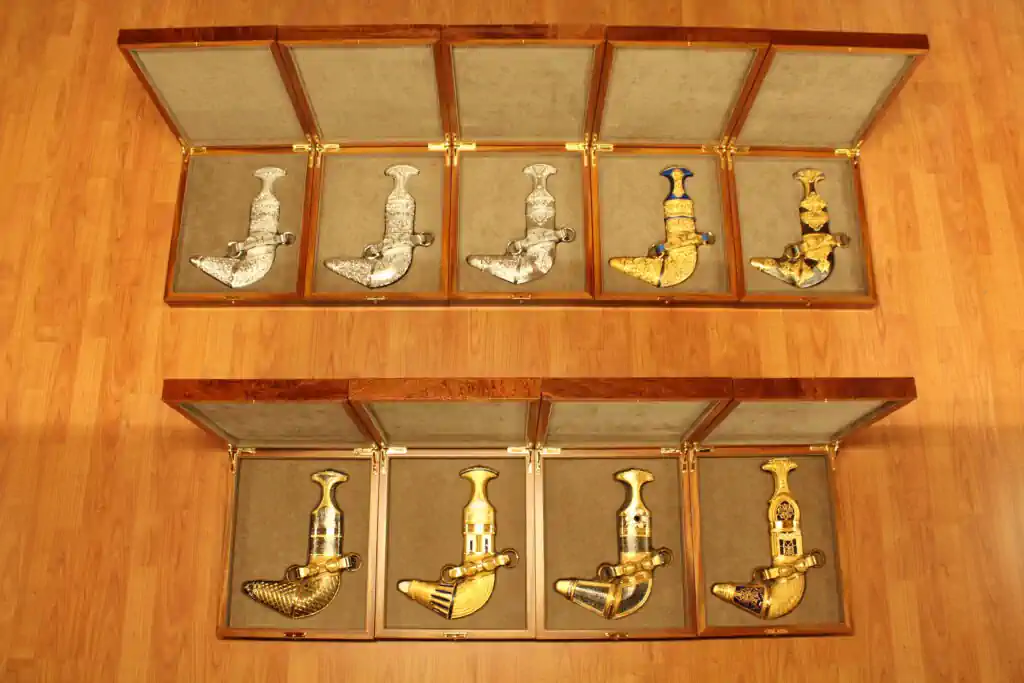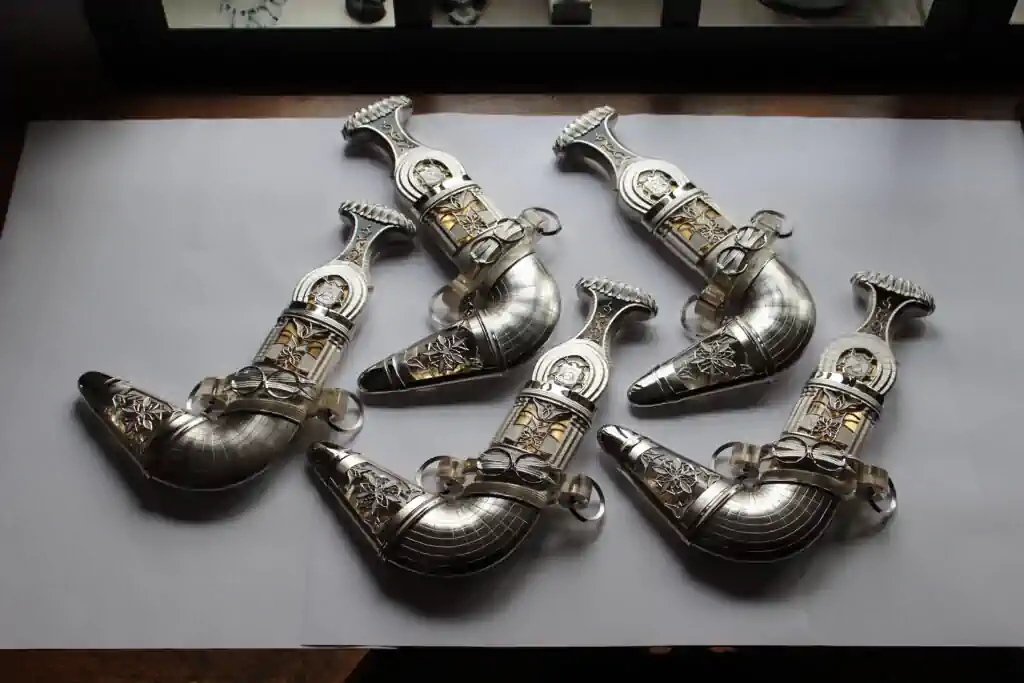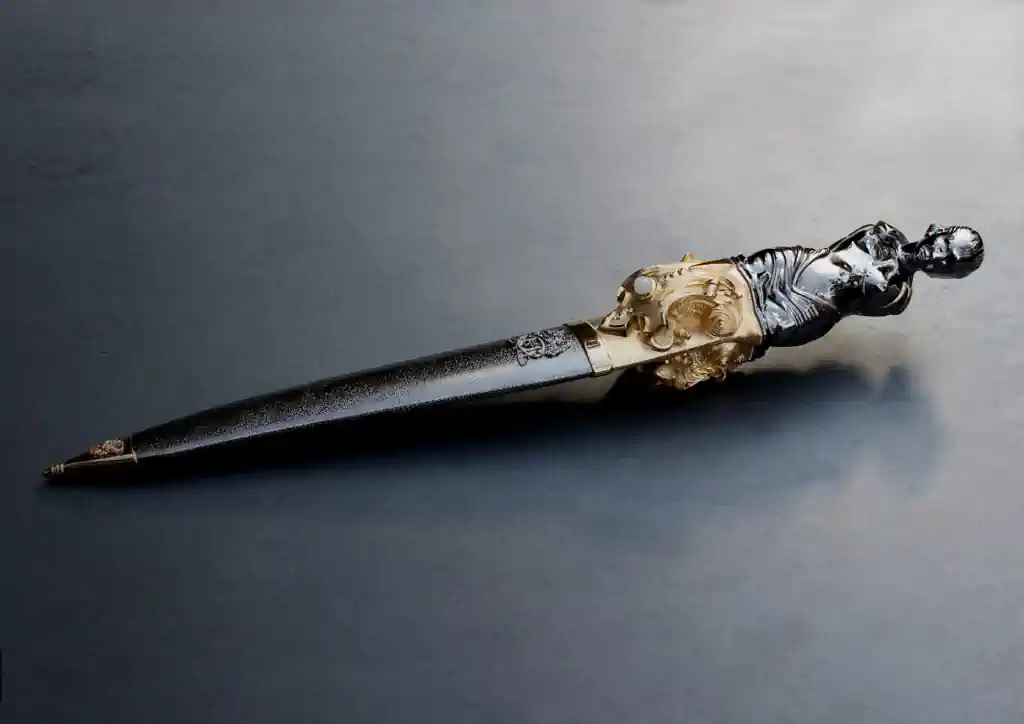About Daggers in History
The dagger was very popular as a fencing and personal defense weapon in 17th- and 18th-century Spain, where it was referred to as the daga or puñal. During the Renaissance Age, the dagger was used as part of everyday dress, and daggers were the only weapon commoners were allowed to carry on their person. In English, the terms poniard and dirk are loaned during the late 16th to early 17th century, the latter in the spelling dork, durk (presumably via Low German, Dutch or Scandinavian dolk, Dolch, ultimately from a West Slavic touch), the modern spelling dirk dating to 18th-century Scots.
Beginning in the 17th century, another form of dagger—the plug bayonet and later the socket bayonet—was used to convert muskets and other longarms into spears by mounting them on the barrel. They were periodically used for eating; the arm was also used for various other tasks, such as mending boots, house repairs, and farm jobs. The final function of the dagger was as an evident and ostentatious means of enhancing a man’s personal apparel, conforming to fashion which dictated that all men carried them.

Modern Period (19th to 21st century)
WW1 trench warfare caused daggers and fighting knives to come back into play. They also replaced the sabers officers wore, which were too long and clumsy for trench warfare. They were worn with pride as a sign of having served frontline duty.
Daggers achieved public notoriety in the 20th century as ornamental uniform regalia during the Fascist dictatorships of Mussolini’s Italy and Hitler’s Germany. Several other countries, including Japan, used dress daggers, but never to the same extent. As combat equipment, they were carried by many infantry and commando forces during the Second World War. British Commando and other elite units were issued an exceptionally slender dagger, the Fairbairn–Sykes fighting knife, developed by William E. Fairbairn and Eric A. Sykes from real-life close-combat experiences gained while serving on the Shanghai Municipal Police Force. The F-S dagger proved very popular with the commandos, who used it primarily for sentry elimination. Some units of the U.S. Marine Corps Raiders in the Pacific were issued a similar fighting dagger, the Marine Raider stiletto though this modified design proved less than successful when used in the type of knife combat encountered in the Pacific theater due to this version using inferior materials and manufacturing techniques.
During the Vietnam War, the Gerber Mark II, designed by US Army Captain Bud Holzman and Al Mar, was a famous fighting knife pattern privately purchased by many U.S. soldiers and marines who served in that war.
Aside from military forces, most daggers are no longer carried openly but concealed in clothing. One of the more popular forms of concealable blade is the boot knife. The boot knife is nothing more than a shortened dagger compact enough to be worn on the lower leg, usually using a sheath clipped or strapped to a boot or other footwear.


Cultural symbolism
The dagger is symbolically ambiguous. For some cultures and military organizations, the sword symbolizes courage and daring in combat.
However, daggers may be associated with deception or betrayal due to the ease of concealment and surprise the user could inflict upon an unsuspecting victim. Indeed, many assassinations have been carried out using a dagger, including Julius Caesar’s. A cloak and dagger attack is when a deceitful, treacherous, or concealed enemy attacks a person. Some have noted a phallic association between daggers and the succession of royal dynasties in British literature.
In European artwork, daggers were sometimes associated with Hecate, the Ancient Greek goddess of witchcraft.

Modern Use
The dagger still survives in military use as a close combat and ceremonial arm.
Many nations use the dagger pattern in the form of the bayonet. Daggers are commonly used as part of the symbols of elite military units or special forces, such as the US Army Airborne Special Operations unit or the Commando Dagger patch for those who have completed the British All Arms Commando Course.


